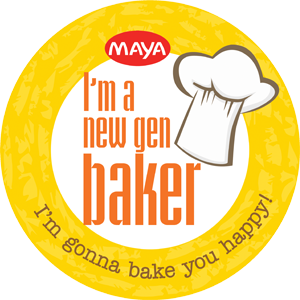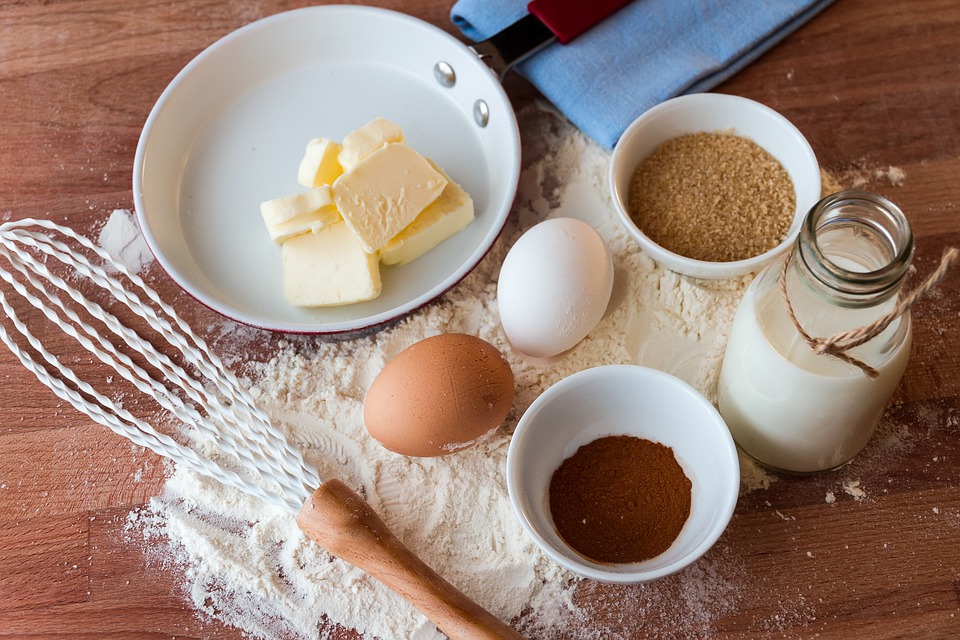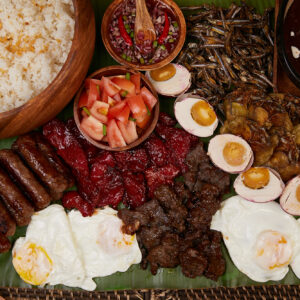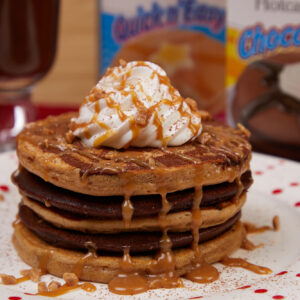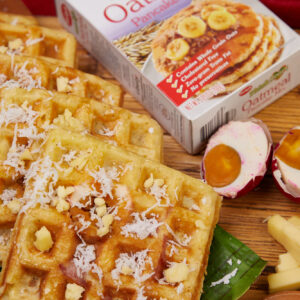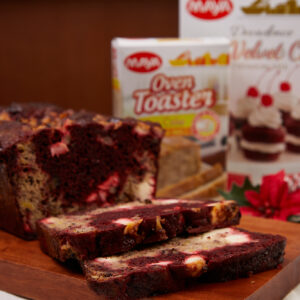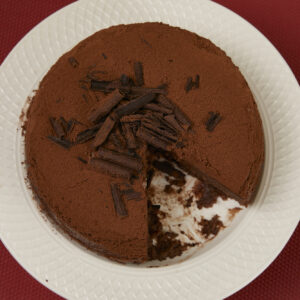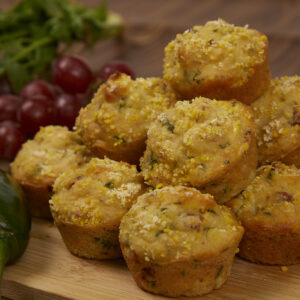Ever wanted to learn how to bake but thought it was too difficult?
Then this article is for you!
With a little time and effort, you’ll quickly discover it’s simpler than you think.
Our mission at New Gen Baker is to make baking accessible to everyone, which is why we’ve put together this nifty guide for beginners.
You’ll find everything you need for your baking journey, including easy recipes to try. The most important thing is to read up on the basics and follow it up with practice. We promise that the more you keep at it, the better you’ll be at baking!
Here’s a quick breakdown of what you’ll learn from this article:
So what does it take to be a master baker? Whether you’re a newbie or an expert, these are five skills you need to learn:
Developing your organization skills is an absolute must when it comes to baking. Before trying your hand at any recipe, the first thing to do is read and understand each step. If there’s something you don’t understand, do your research.
Next, check the list of ingredients and note the amounts. Make sure you have everything you need before you even begin. The last thing you want is to be in the middle of a recipe only to discover you’re missing an ingredient.
Baking requires precision, so be sure to have the right measuring tools to get the amounts you need. Leaving out anything or skipping a step will likely affect the quality of your baked goods.
It’s not enough to prep your ingredients and baking tools. It doesn’t hurt to double check to see whether your ingredients are expired or if you need baking soda instead of baking powder.
Your baking tools should also all be in working order. Are the markings on your measuring cups and spoons easy to read? Do your thermometers and scales work? Has the oven been cleaned since the last time you baked?
Paying close attention to the little things can help you avoid disaster.
All those beautiful Insta-worthy baked creations online may defy imagination, but they’re not out of reach.
Baking techniques like icing and frosting simply require practice. Just keep in mind that hand-eye coordination is a skill that can be learned and developed. If you think you’re all thumbs, challenge yourself. Don’t give it up, and keep trying until you get it.
Patience is a virtue. Just take it slow and remember you don’t have to get it right on your first try. Or even your second try!
There are no shortcuts to becoming a great baker, and all master bakers were beginners at one point. It was the time and effort they put in that made them the experts they are today. So don’t be so hard on yourself. Keep on keeping on, because we guarantee it’s worth it!
Once you’re more confident with your baking skills, it’s time to experiment and let your creative juices flow! Try out different flavor combinations, make your own recipes, and put the icing on the cake.
There’s immense satisfaction in creating delicious baked goods, and pulling off an original creation is even more fulfilling. This is where all your hard work pays off!
There are tons of ingredients used for baking, but let’s start with the basics and why they’re important.
There are several kinds of flour. All-purpose Flour is your all-around baking assistant. You can use it for pretty much anything, including bread. However, bread made from this type of flour is usually softer in texture.
Whole Wheat Flour is typically used for breads and is a good source of fiber. It isn’t suitable for cakes and cookies, and the baked goods it yields have a coarse texture.
Cake Flour, as its name suggests, is for making the king (or queen) of all desserts. It’s made from a combination of red winter wheat and soft white wheat. Aside from high sugar-to-flour ratio cakes, it’s also used in pie crusts, biscuits, and pastries.
Flour is so versatile it’s also used for the household.
Cornstarch literally comes from corn. It’s main role is to serve as a thickening agent and is also used for sauces and gravy.
Leavening agents are the magic ingredients that make your baked goodies rise when they’re in the oven.
Steam is one of them. When water turns into steam, its volume rises significantly and expands your dough.
Baking Soda and Baking Powder are both leavening agents in their own right. However, you can’t just substitute one for the other. Baking soda needs to be mixed with something acidic like lemon juice for it to produce carbon dioxide, while baking powder already contains an acidic ingredient. Adding water triggers the chemical reaction.
And finally, yeast. Essential for fermentation, which is what makes your dough rise. We explain this in more detail in a later section.
Eggs get so many jobs done when it comes to baking. But their most important function is to provide structure. Desserts that need to hold their structure, such as souffles, are egg-based.
Additionally, eggs also give your goodies moisture and help you achieve that golden color. A lemon meringue cake isn’t yellow because of the lemon. You can thank egg yolks for that!
Fats refer to butter, shortening, and vegetable oil.
Butter gives any baked good flavor. Aside from that, it also adds moisture and helps tenderize the texture of what you’re making.
Shortening gives pie crusts and pastries their desired flakiness. Like butter, it produces a tender texture and rich flavor. It is also good for frying.
Oil is an important ingredient in breadmaking. It gives the moisture needed in kneading dough and also helps extend the shelf life of baked goods.
The most common sugars and sweeteners used in baking are granulated or white sugar, brown sugar, and honey.
Granulated sugar is used in most baking recipes. It sweetens, tenderizes, and adds moisture to your baked goods.
Brown sugar is granulated sugar with molasses mixed in, hence the difference in texture. It aids with caramelization and helps with the browning process.
Honey is a sweetener alternative that has certain health benefits, such as a lower glycemic index. It also holds back the growth of mold in baked goods.
Salt, like sugar, adds flavor. It also gives bread volume, and adding more salt to the dough hardens it. In some cases, bakers like to slow down the fermentation process by adding more salt to their dough.
Next up are the tools of the trade. Forget the high-end stuff first and look for the basics. You don’t need to break the bank, but remember to invest in quality equipment.
Buy them in two varieties: one set for measuring dry ingredients and the other for wet. These come in the following sizes: 1 cup, ½ cup, 1/3 cup, and ¼ cup.
Get these as a nifty set. The sizes are: 1 tablespoon, 1 teaspoon, ½ teaspoon, and ¼ teaspoon.
Not only is this a versatile tool, it’s also durable. It makes mixing thick dough a piece of cake.
It’s for folding ingredients as well as scraping every last bit of batter from a bowl or container.
If you haven’t experienced transferring cookies or cake from a baking sheet, spare yourself the mess. This tool helps you get it done nice and quick.
From whisking eggs to combining ingredients, this tool is a must for any kitchen.
You’re going to need this to flatten your dough or pie crust. It’s good for crushing crackers and cookies with a few well-placed whacks.
This tool acts as a sifter for dry ingredients. It’s also effective when draining small ingredients.The finer the mesh the better.
You just need one for your baking needs, so go for quality.
Some the basics include square or rectangular baking pans, round pans, pie plates, cookie sheets, and loaf pans, to name a few.
You’ll need to cool off your baked goodies when they come out of the oven. This will get the job done right.
It isn’t baking without an oven! Choose between gas or electric according to your preference. If you’re really serious about baking, make sure to invest in a good quality one.
Baking has a lot to do with chemistry. When you combine ingredients in specific amounts, they react in such a way to produce a necessary characteristic of the baked good. Here are two examples:
Ever wonder what causes browning on bread crust, or, the bottom of your cookies and biscuits? Here’s why: mixing flour with water to make dough forms gluten—a protein that contains amino acids. Baking dough at a high temperature causes amino acids to combine with the reduced sugars. This results in the browning of your baked goods. In scientific terms, it’s called The Maillard Reaction.
The key to baking good bread is yeast. Without it, your dough will remain flat, and trust us, that’s not what you want.
When yeast is combined with flour and water, they create simple sugars, which then produce carbon dioxide and ethanol in air bubbles. This makes your dough rise through fermentation. It’s also the secret to producing flavorful bread like sourdough.
Baking uses a lot of math, too. We’re not talking long division, but baking does call for precision. Measuring out ingredients according to the recipe is crucial to the outcome. That’s why there’s a whole range of measuring tools and equipment used in baking. Think spoons, cups, scales, and thermometers.
In fact, putting too much or too little of an ingredient can alter the taste and texture of what you’re baking. And, not in a good way.
This formula is popular among professional bakers who need to formulate their recipes, whether it’s for bread, doughnuts, cakes, cookies, buns, you name it! It’s also something that newbie bakers should explore, especially if decide to make it your profession.
The advantage of this method is it lets you be more flexible without compromising the consistency of your baked goods. Even if you change the measurement of one ingredient, the formula allows you to take the guesswork out of ingredient ratios:
Baker’s Percentage ingredient = 100% x Weight ingredient / Weight flour
If you want to learn more about this, read our previous post on The Science of Baking.
Recipes sometimes use ounces or grams instead of cups. Depending on where you are in the world, something as simple as converting one cup to grams can confuse even the best bakers. Maybe these aren’t units of measurement you’re used to.
Here’s a conversion chart with some basic examples to help you out. It uses US cups as the basis of measurement, and assumes that most ingredients are spooned into a cup (flattened and not heaping):
| Ingredient | US Cups | Grams | Ounces |
| Butter | 1 | 227 | 8.01 |
| 1/2 | 113.5 | 4 | |
| 1/3 | 75.67 | 2.67 | |
| ¼ | 56.75 | 2 | |
| Tablespoon | 14.9 | 0.5 | |
| Teaspoon | 4.73 | 0.17 | |
| All-purpose Flour | 1 | 125 | 4.41 |
| ½ | 62.5 | 2.2 | |
| 1/3 | 41.67 | 1.47 | |
| ¼ | 31.25 | 1.1 | |
| Tablespoon | 7.81 | 0.28 | |
| Teaspoon | 2.6 | 0.9 | |
| Cake Flour | 1 | 114 | 4.02 |
| ½ | 57 | 2.01 | |
| 1/3 | 38 | 1.34 | |
| ¼ | 28.5 | 1.01 | |
| Tablespoon | 7.13 | 0.25 | |
| Teaspoon | 2.38 | 0.08 | |
| Cornstarch | 1 | 125 | 4.41 |
| ½ | 62.5 | 2.2 | |
| 1/3 | 41.67 | 1.47 | |
| ¼ | 31.25 | 1.1 | |
| Tablespoon | 7.81 | 0.28 | |
| Teaspoon | 2.6 | 0.09 | |
| Granulated (White) Sugar | 1 | 201 | 7.09 |
| ½ | 100.5 | 3.55 | |
| 1/3 | 67 | 2.36 | |
| ¼ | 50.25 | 1.77 | |
| Tablespoon | 12.56 | 0.44 | |
| Teaspoon | 4.19 | 0.15 | |
| Brown Sugar (Packed) | 1 | 195 | 6.88 |
| ½ | 97.5 | 3.44 | |
| 1/3 | 65 | 2.29 | |
| ¼ | 48.75 | 1.72 | |
| Tablespoon | 12.19 | 0.43 | |
| Teaspoon | 4.06 | 0.14 | |
| Milk | 1 | 245 | 8.64 |
| ½ | 122.5 | 4.32 | |
| 1/3 | 81.67 | 2.88 | |
| ¼ | 61.25 | 2.16 | |
| Tablespoon | 15.31 | 0.54 | |
| Teaspoon | 5.1 | 0.18 | |
| Cocoa Powder | 1 | 125 | 4.41 |
| ½ | 62.5 | 2.2 | |
| 1/3 | 41.67 | 1.47 | |
| ¼ | 31.25 | 1.1 | |
| Tablespoon | 7.81 | 0.28 | |
| Teaspoon | 2.6 | 0.9 |
Source: The Calculator Site
Now that we’ve covered the basics, it’s time to get baking! As promised, here are some simple sweet and savory recipes to try. You can even try baking as a family for a fun learning experience.
You’ll love these bite-sized Strawberry and Apple Galette Tarts, topped with strawberry jam and apple slices.
Who needs to clean up a mess of multicolored bits of paper when you can have edible ones on a Confetti Party Cake?
No hairy cuties were harmed in the making of these Chunky Monkey Breakfast Cookies. Think trail mix plus chocolate chips in this filling and yummy cookie recipe.
Arf! These Dog Bone Breadsticks are too cute to eat. Well, not quite because you’ll be missing out on their parmesan cheese goodness. Serve them with marinara sauce for dunking.
These Mexican Breakfast Muffins will have you saying Ole! all day! Sink your teeth into an egg muffin filled with beef and salsa filling.
Last but not least, we’re leaving you with a list of articles you can use as resources for your baking adventure:
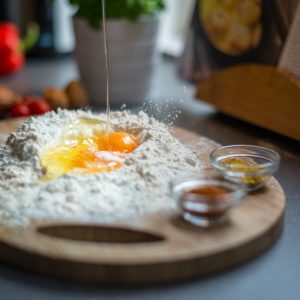
The Art of Substitutes
No matter how great you are at baking, you’ll still face the challenge of lacking one or more ingredients from time to time. Although it’s
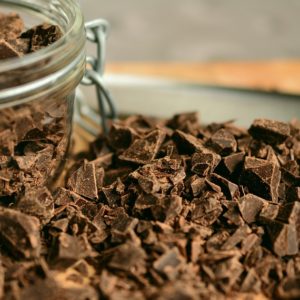
More Baking Hacks You Can’t Bake Without
Due to popular demand, we’ve put together even more tricks to make your baking life so much easier. With all the baking the NewGen staff

Bake it Easy with These 6 Useful Baking Hacks
Anybody can learn how to bake, but as with all skills worth learning, there are challenges. However, there are ways to make tackling them so

4 Oven Tips and Tricks
Your oven is absolutely essential for baking; you simply can’t bake without it! That’s why it’s important to understand its capabilities and setting aside time
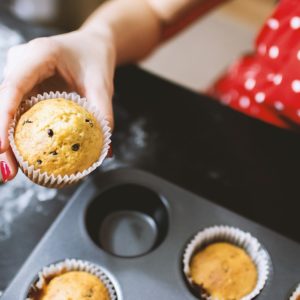
4 Baking Techniques Every Baker Should Learn
If you want to bake great cakes, cookies, pies, and bread, then you absolutely have to know these baking methods. We’ve said it before, but
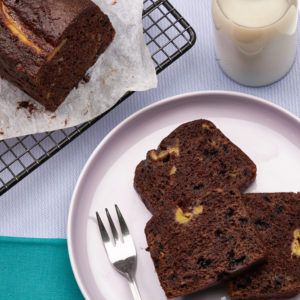
6 Quick Tips Every Baker Should Know
We at New Gen Baker can’t get enough of baking. We’re always looking for ways to make it easier for every aspiring baker, that’s why
These are just a few of our many resource articles. Explore our website to discover and learn more about the art of baking. If this Baking for Beginners guide helped you, make sure to share it with your friends and family!
Finally, if you want to level up your baking skills, we recommend taking a class or two at the Maya Kitchen Culinary Center.
